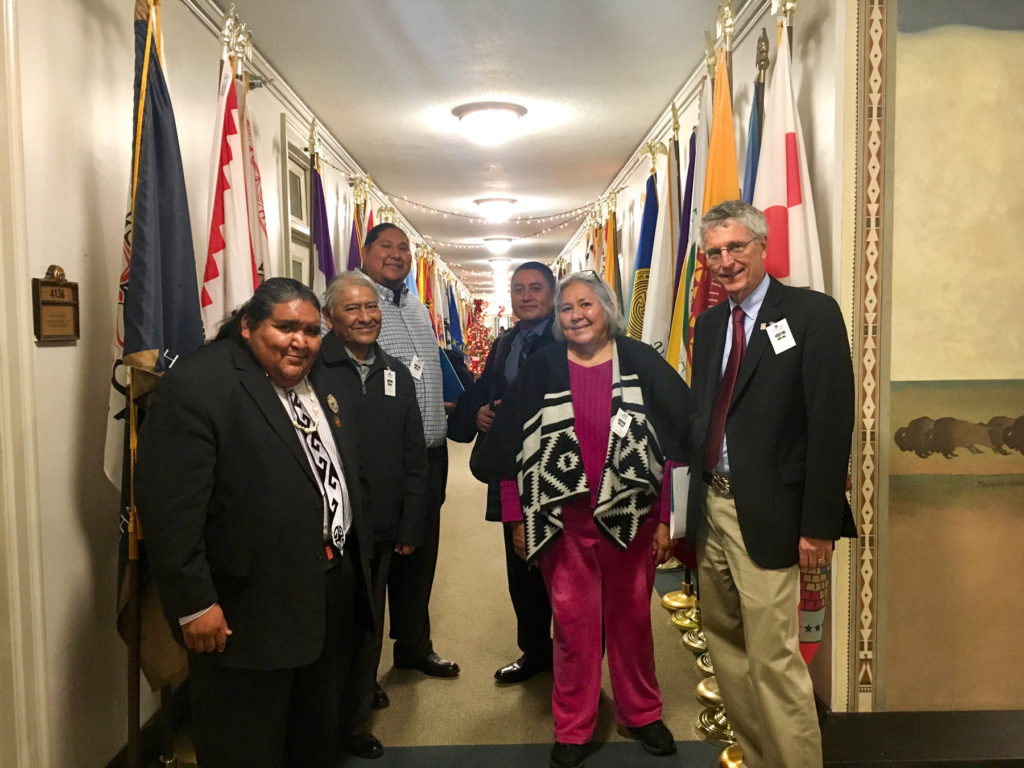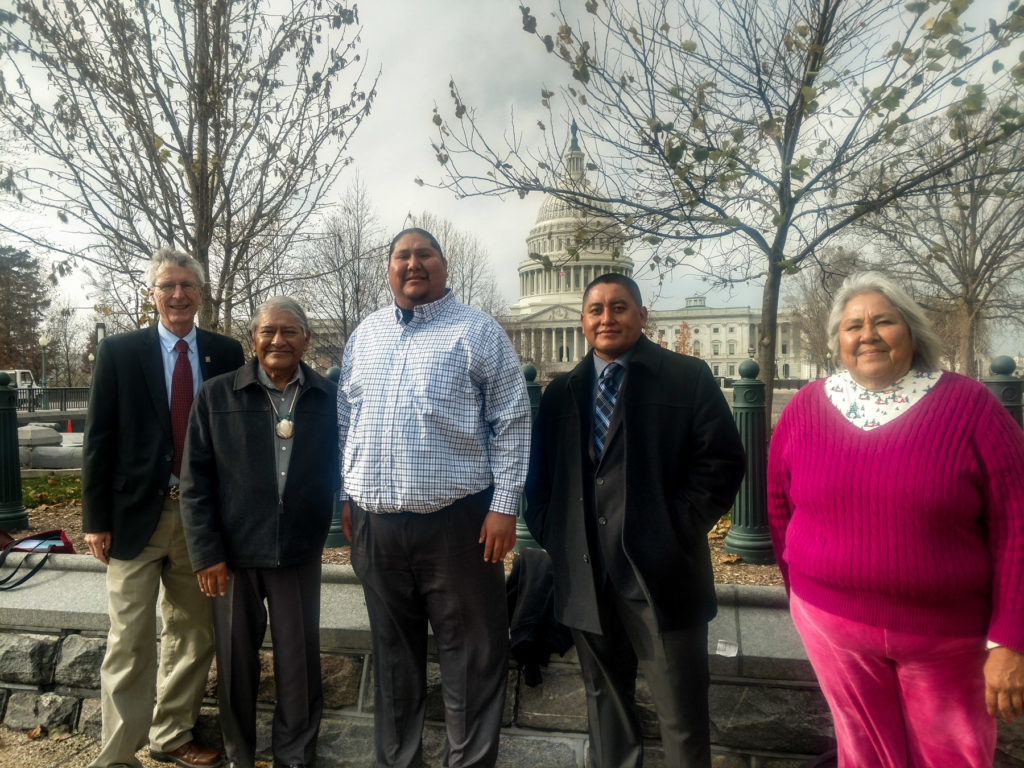- Home
- >
- Preservation Archaeology Blog
- >
- Chaos and the Swamp—a perspective from an airpla...
(December 8, 2017)—The last few days have been more chaotic than most for me. On Monday, while I was flying east to Washington, DC, President Trump was making good on his promise to Utah Senator Orrin Hatch, (illegally) slashing more than 1.1 million acres from Bears Ears National Monument. On Wednesday, as I flew back to Tucson after completing eight meetings about the Great Bend of the Gila, our attorneys filed a lawsuit challenging President Trump’s proclamation.
Archaeology Southwest and our seven co-plaintiffs worked closely with an incredible team of lawyers at Hogan Lovells to contest the president’s actions. We at Archaeology Southwest are grateful to Hogan Lovells and our team for bringing legal action just over 48 hours after President Trump’s announcement.
Despite the president’s equivocation, this is not a “modification” of Bears Ears—it is a revocation. When you start with a monument of 1.35 million acres and leave only 18 percent of that area? That’s a revocation. When official records show that there are 8,480 known archaeological sites in Bears Ears—only 10 percent of which have been inventoried by professionals—and then 73 percent of those sites are left out of the protected area? That’s a revocation.
Following this revocation, the president created two meager new “units” that together total just over 200,000 acres. Compared to the cultural landscape of 1.9 million acres identified as sacred by five tribes of the Bears Ears Inter-Tribal Coalition, or the 1.35 million of those sacred acres that President Obama protected, the new units are tiny.
Now, the courts will address these issues. The tribes filed suit on Monday evening just hours after the president’s revocation proclamation. And two additional suits followed, including ours.
While all this was going on, I was working with another amazing team to make sure that our goals related to the proposed Great Bend of the Gila National Monument weren’t forgotten in Washington, DC. There is no current bill before Congress, so we were educating and reminding our representatives about the important and diverse values represented within the cultural landscape of the Great Bend. Our meetings with congressional offices and agency staff were each 15 to 30 minutes long. Janelle DiLuccia of the National Trust for Historic Preservation organized the trip, and we were accompanied by five tribal members I will briefly introduce:
Barnaby Lewis, Tribal Historic Preservation Officer for the Gila River Indian Community, provided overviews at our meetings. He explained past efforts to document the cultural resources and identify the connections of 13 tribes to the cultural landscape of the Great Bend.
Gloria McGee, Cultural Committee of the Fort Yuma Quechan Tribe, highlighted the many trails from different time periods that pass through the Great Bend—from ancient tribal footpaths to later routes of the Spaniards, the Mormon Battalion, and the Butterfield Stage Line.
Albert Nelson, Fort McDowell Yavapai Nation, shared how mobile the Yavapai people once were, with a territory and a hunting-gathering lifeway that extended from the San Francisco Peaks to east of Phoenix to the modern international border to the lower Colorado River near Yuma. Petroglyphs in the Great Bend have particular design elements of significance to the Yavapai people.
Alvin Antone, council member from the Ak-Chin Indian Community, recounted how the resources of the Great Bend of the Gila are his people’s library—because their history isn’t written in books, it is written on the land.
And Verlon Jose, Vice Chairman of the Tohono O’odham Nation, spoke about the powerful stories embodied in the cultural landscape of the Great Bend. He emphasized that they are the stories of America that are written on the rocks, imprinted on the ground, and buried beneath the desert soils. These places need protection so that people can visit, learn, and—most importantly—experience the special feelings of a direct connection to the past.

It is this richness of connections to the recent and the distant past that makes Great Bend of the Gila so special. It is the fragility of the resources—sometimes subtle and often right on the surface—that is the reason this place is threatened by the increase in visitation the region is experiencing year after year.
Perspectives on protecting public lands are in flux in our nation’s capital, so this visit to Washington, DC, was very timely. To respond to the potential for harm to cultural resources and especially to cultural landscapes, it is essential to work closely with partners, to continue educating, and to talk with those we agree with and with those we don’t. Sometimes the tools of collaboration are effective, and sometimes resistance and legal action are the only viable option.
What are our goals for Bears Ears and the Great Bend? What are all these years upon years of meetings and visits and air travel about? To take land away and make sure most people are excluded from enjoying any part of it? To have scientific control of it? To make sure there are no good jobs in gateway communities?
Of course not. All those common critiques running through media interviews and social media feeds may be refuted. So, in all this chaos, let us be honest with each other. Let us listen, and learn, and gain wisdom.
At Archaeology Southwest, our goal is to support tribal communities and their connections to these natural and cultural landscapes since time immemorial.
Our goal is to ensure that their stories in and of the land are not only protected, but also shared and celebrated with all Americans, because we all share ownership of the public lands that hold these stories.
Our goal is that people be able to visit these places, and that they do so respectfully.

In the case of Bears Ears and the Great Bend of the Gila, achieving those goals merits a stronger management presence by the Bureau of Land Management. Respectful use of these public lands does not have to be as restrictive as is found in national parks. If visitors share the goal of protecting fragile, nonrenewal cultural resources for the future, then limiting activities that cause harm will be voluntary rather than burdensome.
As a society, we must take the long view, and that view must be inclusive. At Archaeology Southwest, we are trying to do our part by building broader networks of relationships. We are trying to do our part by working for long-term change that leads to permanent protections for treasured cultural landscapes.
